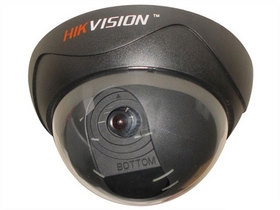1. Traditional analog monitoring system
The traditional analog monitoring mode was popular when the road monitoring application was just introduced in large and medium-sized cities in China, but it has gradually declined in recent years. Its main defects are as follows:
The transmission channel is too expensive;
Since the distance between the road monitoring points and the monitoring center is usually several kilometers or even tens of kilometers, and the effective transmission distance of the video cable is only 300 meters or so, the conventional solution is to lay optical cables between the monitoring points and the monitoring center as transmission channels, and the optical terminals at both ends of the optical cables are used as video/optical signal conversion equipment. However, this solution is too expensive, and the cable laying cost alone accounts for more than 80% of the total investment cost of the entire monitoring system;
The system structure is complex, the monitoring center has many equipment, and the operation is tedious;
The system is composed of video camera The monitoring TV wall, video recorder, control matrix, picture splitter, decoder and other auxiliary equipment are composed of coaxial cable as the image transmission medium and shielded twisted pair as the control signal transmission medium. The equipment is numerous, complex in structure, poor in scalability, and most of the equipment is special equipment. The operator is required to have the corresponding operation ability after training.

2. With Digital Video Recorder The second generation quasi digital video monitoring system
Compared with the traditional analog monitoring mode, the quasi digital video monitoring system based on digital hard disk recorder is no less than a leap. In the application of road monitoring, the digital hard disk recorder is placed at the front end of the road monitoring and connected to the camera. It can record the video source signal in the local hard disk after analog/digital conversion and compression, and upload it to the monitoring center through the city's telecommunications data network or other network channels, which breaks away from the limitations of traditional analog monitoring that must lay optical cables, The system structure is greatly simplified. However, due to the limitations of its own technical architecture, digital hard disk video recorders have always been unable to solve the problems of long image transmission delay, inability to realize multi-channel simultaneous monitoring, poor integration, etc. in network-based remote centralized monitoring applications.
3. With network video The server The third generation full digital remote video centralized monitoring system
The third generation full digital remote video centralized monitoring system is a new digital monitoring mode based on the network, with digital video processing technology as the core, and comprehensive use of photoelectric sensors, digital image processing, embedded computer system, data transmission network, automatic control and artificial intelligence, It not only has the advantages of the second generation of quasi digital video monitoring mode, such as computer fast processing ability, digital information anti-interference ability, convenient for fast query and recording, clear video image, and single machine display of multiple images, but also relies on the network to truly play the advantages of broadband network, The combination of the monitoring center and the monitoring targets anywhere that the network can reach into a system truly meets the needs of remote, real-time and centralized video monitoring system. Its core technology product is the network video server.
4. The third generation full digital remote video centralized monitoring system with the monitoring center management platform as the core
The construction of the overall architecture of the video monitoring system is based on the construction of the video monitoring system, which is mainly divided into five parts: front-end television monitoring system, dedicated network transmission system, command monitoring system, control and management platform, and storage system. The management platform of the monitoring center is the management core.
![]()






